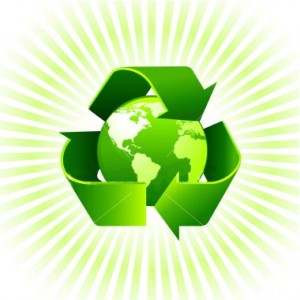Team:Imperial College/Background
From 2013.igem.org

The Waste Issue
Waste is a major byproduct of our free market society and disposable culture. Every year over 3 billion tonnes (Gt) of waste are produced within the European Union [http://ec.europa.eu/environment/waste/]. This includes municipal solid waste (MSW), industrial and hazardous waste. We have estimated that between 2005 to 2050, enough waste will be produced to create a mountain half the size of Everest. Plastic waste alone, at ten percent of the total will produce a mountain the size of Mont Blanc, the largest mountain in the EU. Even more significantly, this represents only a fraction of the world's population, approximately 500 million live within the EU. When we look at the figures from the US, we see that solely industrial waste comes to around 7.6 Gt [http://www.epa.gov/wastes/nonhaz/industrial/guide/], and this figure was from the 1980s, since then it has no doubt increased per capita as it has in Europe. Due to the necessities of living, we are always going to produce waste. We therefore need to evaluate the end of life options for the waste we produce in order to optimise our use of this valuable resource. Hover over the pictures below to learn about the most common destinations for our waste.

Landfill
Every year, tonnes of waste are buried in landfill sites and the materials are lost forever. Most petrochemical plastics are designed to be durable and resist degradation. They can be broken down by sun light. When they are buried in landfill sites, however, they remain virtually forever.
Although some landfill sites are equipped with landfill gas capture facilities, nearly 50% of the gases is carbon dioxide, posing problems when using landfill gas for energy [9]
Meanwhile, harmful substances including acid gases released from landfill sites severely affect human health [1]. For example, babies of women living within 7 km from hazardous landfill sites have a significant excess of non-chromosomal congenital anomalies.

Incineration
Incineration is burning the waste as a fuel. During the combustion process, heat and electricity can be generated with an efficiency of 27% [2]. Thus incineration is a one-time-only affair; the resources which went into the production of these materials are lost to the atmosphere. Meanwhile, ash generated in incinerators, counting for more than 28% of the total waste fed in, has no market as its toxic component poses risks to human health [3].
Incinerator emissions do not just damage the environment [4]; people from all age groups who live 3 km to 7.5 km away from incinerators have shown substantial excess cancers [5] [6]. Statistically significant excess of cancer births have also been observed near industrial incinerators.

Gasification
Gasification is the conversion of materials with carbon and hydrogen in their chemical structure into syngas i.e. hydrogen gas and carbon monoxide, which are combusted to produce electricity with an efficiency of 37% [2]. Gasification requires intensive energy input to achieve 1200 to 2000 working temperature and 6900 kPa working pressure [2] [7]. Gasification is still facing many challenges. For instance ash and dust can pollute the syngas, and most gasifiers requires external heat supply [8].
For materials like plastics, the gasification products are sometimes used to re-form the monomers for plastics, which costs more energy than breaking down to monomers [2], and the energy used for production of the material is wasted.

Recycle
If paper, cardboard plastics, metals and wood are kept chemically pure and physically separated then they can often be recycled and reused. A large percentage of our waste, however, is mixed together or contaminated with food waste and other contaminants. The consequence of this is that mixed waste cannot be recycled with current technologies. Current recycling facilities rely on man power and mechanical processes. Sophisticated recycling plants do a great job at recovering large pieces of rigid material, but it is impossible for them to separate waste which has been broken into tiny fragments.
What else could be done with mixed waste?
We wondered if mixed waste could be a source of metabolites and feedstock for bioplastic producing bacteria. The first module of our system using mixed, non-recyclable waste as a carbon source for poly-3-hydroxybutyrate synthesis. We have designed the M.A.P.L.E. appliance that can utilise an array of mixed waste constituents. In the future, this will be able to overcome current limitations in recycling technologies, and more importantly, create a means of designing and producing plastic products at different scales. We also understand that waste management is a social challenge and we have explored these aspects in our human practices.
References
- http://www.hpa.org.uk/webc/HPAwebFile/HPAweb_C/1309969974126
- http://www.plastics.ca/_files/file.php?fileid=filegXOOqaldWF&filename=file_files_Gasification2_Pop._Science_7_Aug._03.pdf
- http://www.foe.co.uk/resource/briefings/safety_incinerator_ash.pdf
- http://www.bredl.org/pdf2/StopIncinerationBlowingSmoke.pdf
- http://ije.oxfordjournals.org/content/29/3/391.full.pdf
- http://www.no-burn.org/downloads/Incinerators%20Trash%20Community%20Health.pdf
- http://www.sciencedirect.com/science/article/pii/S0961953407002322
- http://ec.europa.eu/environment/waste/
- http://http://www.sciencedirect.com/science/article/pii/S1385894700003661
 "
"



